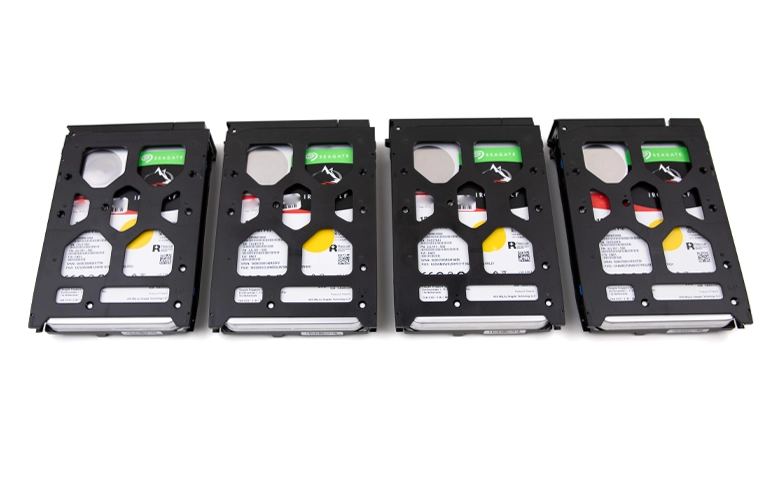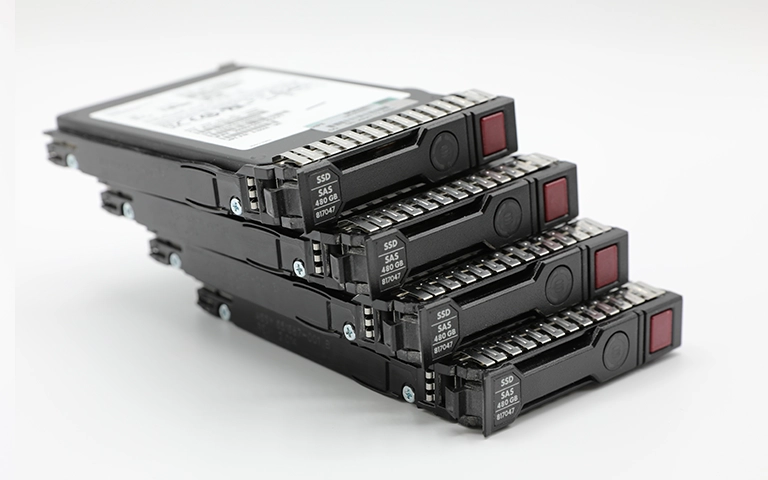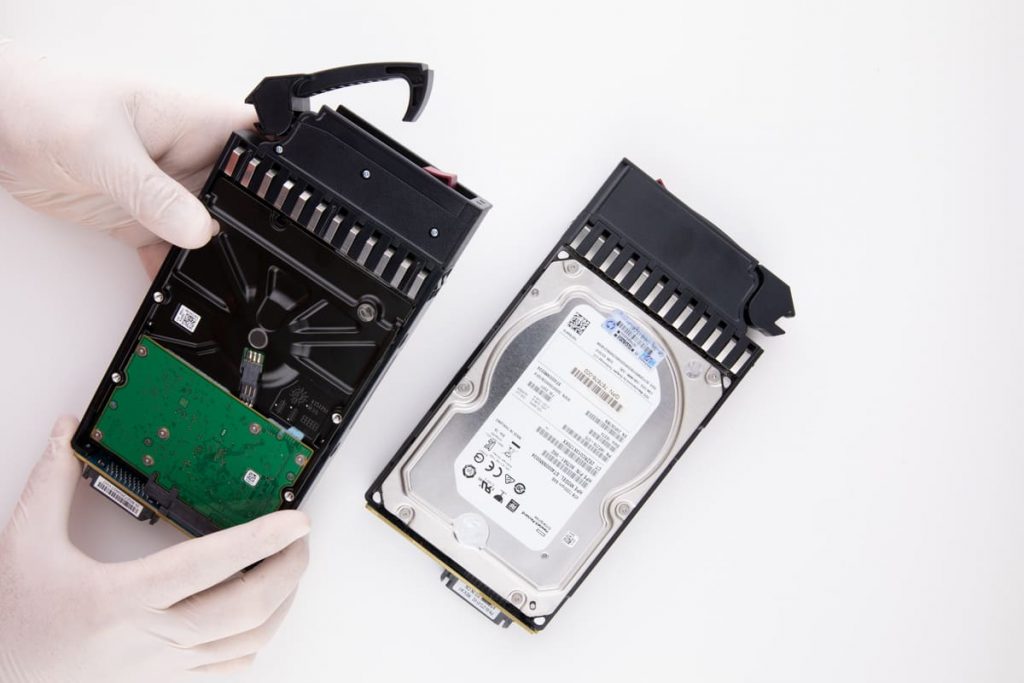Modern storage systems rely on efficient communication between the operating system and storage drives. Two common modes that define how this communication works are AHCI (Advanced Host Controller Interface) and RAID (Redundant Array of Independent Disks).
Although both are used for managing SATA-based drives, they serve entirely different purposes. AHCI is designed to optimize performance and compatibility for single-drive systems, while RAID focuses on redundancy, fault tolerance, and multi-drive configurations.
Understanding the difference between AHCI and RAID is essential when setting up or upgrading a computer, server, or enterprise storage environment.
In this article, we’ll explain how each mode works, compare their advantages, and help you decide which configuration best suits your system.

What Is AHCI (Advanced Host Controller Interface)
AHCI, or Advanced Host Controller Interface, is a technical standard developed by Intel that defines how SATA storage devices communicate with a system’s motherboard. It was designed to take full advantage of modern SATA capabilities, improving data transfer speed and efficiency compared to older IDE modes.
One of AHCI’s main features is Native Command Queuing (NCQ), which allows the drive to optimize the order of read and write commands for better performance. AHCI also supports hot swapping, meaning users can connect or disconnect drives without shutting down the system.
This mode is ideal for desktops, laptops, and workstations using a single hard drive or SSD, as it provides faster access and broad compatibility with modern operating systems. AHCI is also widely implemented in enterprise-grade SATA drives, as discussed in our post on Enterprise Hard Drive.
In short, AHCI enhances performance but does not provide redundancy or protection against drive failure.

What Is RAID (Redundant Array of Independent Disks)
RAID, short for Redundant Array of Independent Disks, is a storage technology that combines multiple physical drives into one logical unit. Its main purpose is to increase data reliability, speed, or both, depending on how the drives are configured.
Unlike AHCI, which manages a single drive, RAID distributes or mirrors data across several disks. Common RAID levels include:
- RAID 0: Focused on performance by striping data across drives, but offers no redundancy.
- RAID 1: Mirrors data on two drives, providing protection against a single drive failure.
- RAID 5: Combines striping with parity, offering a balance of speed and fault tolerance.
- RAID 10: Merges mirroring and striping for both high speed and redundancy.
These configurations help reduce downtime and data loss in both personal and enterprise systems. Learn more about RAID fundamentals in our detailed post on What Is RAID in Computers.
RAID setups are commonly used in servers, NAS devices, and data centers where uptime and data integrity are critical.

AHCI vs RAID – Key Differences
Although AHCI and RAID both manage how drives communicate with the system, they function in very different ways. AHCI focuses on optimizing the performance of single SATA drives, while RAID provides redundancy and higher reliability through multi-drive configurations.
Here is a detailed comparison:
Different RAID levels such as 0, 1, and 5 further expand the flexibility of RAID systems for both performance and data safety. You can explore these configurations in our guide on Types of RAID.
Advantages of AHCI Mode
AHCI mode is a preferred choice for many individual users and small setups because of its simplicity and improved performance for SATA drives. Below are the main advantages:
Native Command Queuing (NCQ): Optimizes read and write commands, enhancing data throughput and reducing latency.
Hot Swapping Support: Allows users to connect or disconnect drives without restarting the system, improving convenience and uptime.
Broad Compatibility: Works seamlessly with modern operating systems and SATA-based storage devices.
Improved SSD Performance: Enables advanced features that allow SSDs to operate more efficiently, especially in single-drive setups.
Simplified Setup: AHCI mode requires no additional configuration or controllers, making it ideal for users seeking a straightforward storage option.
However, while AHCI improves data transfer performance, it does not protect against drive failure. SSDs operating under AHCI mode can still experience issues like degraded write speeds or firmware-related slowdowns.
Advantages of RAID Mode
RAID mode offers several benefits that make it ideal for users who prioritize data protection, performance, and uptime. By combining multiple drives into a single array, RAID can deliver redundancy and higher transfer speeds that AHCI cannot.
Here are the main advantages of using RAID mode:
Data Redundancy: Certain RAID levels, such as RAID 1 and RAID 5, mirror or store parity data, allowing recovery if one drive fails.
Improved Read and Write Speed: RAID 0 and RAID 10 configurations distribute data across multiple drives, resulting in faster throughput and better overall system performance.
Scalability: RAID arrays can be expanded by adding additional drives, making it easy to grow storage capacity as data demands increase.
Fault Tolerance: RAID configurations with parity ensure that data can still be accessed even if a drive malfunctions, reducing downtime.
Optimized for Servers and Enterprise Systems: RAID is commonly implemented in business servers and large-scale storage environments for reliability and consistent performance. Learn more about advanced setups in our post on RAID Configurations for Server.
Overall, RAID mode offers the flexibility and durability that mission-critical systems require.
Fast turnaround times for business-critical data
Which Mode Should You Choose?
Choosing between AHCI and RAID depends on your hardware setup, performance expectations, and data protection needs. Both modes serve important purposes but cater to different use cases.
NAS is the better choice for small and medium-sized businesses that need affordable, centralized file sharing without complex maintenance. It’s ideal for backups, collaboration, and light data workloads.
- Choose AHCI if you are using a single SSD or hard drive and want better performance without complex configuration. It is ideal for personal computers, laptops, and small workstations that do not require redundancy.
- Choose RAID if your system uses multiple drives and you need continuous uptime, data protection, or faster throughput. It is best suited for servers, NAS devices, and enterprise environments handling large datasets.
For users planning a multi-drive configuration, the decision also depends on whether to use software or hardware RAID. Each option offers different levels of flexibility and speed, as explained in our post on Software RAID vs Hardware RAID.
In short, AHCI is simple and efficient for single-drive systems, while RAID provides redundancy and performance for critical applications that cannot afford data loss.

Data Recovery in AHCI and RAID Systems
Both AHCI and RAID configurations can experience data loss, but the recovery approach differs based on the cause and system structure.
In AHCI mode, failures usually occur due to firmware corruption, operating system errors, or drive degradation. Because AHCI operates on a single drive, recovery involves imaging the disk and repairing file system damage.
In RAID mode, data loss is often caused by multiple drive failures, controller errors, or incorrect rebuilds. Recovery from these systems is more complex and requires reconstructing the array virtually to access stored data.
At RAID Recovery Services, our engineers specialize in restoring data from both AHCI and RAID configurations. We use professional imaging techniques, advanced RAID reconstruction tools, and ISO-certified cleanrooms to ensure complete and secure data retrieval.
Even the most resilient RAID arrays can fail due to overlapping hardware or parity errors, as discussed in our post on RAID Failure Rate. When failure occurs, prompt evaluation by professionals ensures the highest chance of recovery.
If your system experiences drive failure, corruption, or array degradation, contact RAID Recovery Services for an expert assessment and secure data restoration.

Trust the experts with proven results
Frequently Asked Questions
What is the main difference between AHCI and RAID?
AHCI is a protocol that enhances the performance of a single SATA drive, while RAID combines multiple drives to improve speed, redundancy, or both. AHCI focuses on communication efficiency, whereas RAID focuses on data protection and scalability.
Which mode is better for SSDs, AHCI or RAID?
For single SSD setups, AHCI is usually the better choice because it allows features like Native Command Queuing and TRIM support. However, if you are using multiple SSDs in an array for performance or redundancy, RAID mode provides better results.
Can I switch from AHCI to RAID mode without losing data?
Switching modes can cause boot errors or data loss if done incorrectly. Always back up your data before making changes in BIOS. Professional assistance is recommended when converting between AHCI and RAID configurations.
Does RAID replace the need for regular backups?
No. RAID reduces downtime and offers redundancy, but it is not a substitute for backups. Data corruption, accidental deletion, or malware can still cause loss, even in RAID systems.
Can data be recovered from failed AHCI or RAID drives?
Yes. Data recovery specialists can retrieve information from failed drives in both AHCI and RAID setups. At RAID Recovery Services, our engineers handle both simple and complex recovery cases with precision and confidentiality.